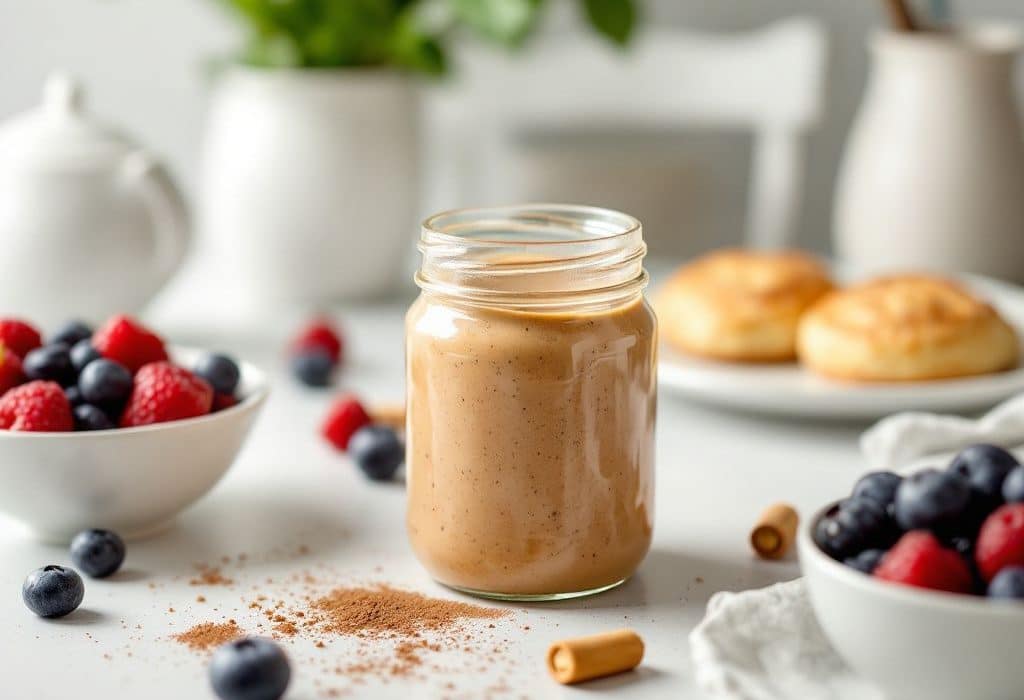Alright, folks, let’s dive straight into the world of flavors and sensations. Picture this: you’re craving something warm, cozy, and a bit spicy — a comfort food but with an exciting twist. Cinnamon is often the go-to spice for this magical transformation, turning a simple dish into a heartwarming treat. But have you ever wondered how to harness the full power of this spice? Well, buckle up because we’re venturing into the delicious realm of cinnamon butter, where natural skincare benefits meet irresistible flavor.
What’s the Buzz About Cinnamon Butter?
Let me tell you, if you haven’t tried cinnamon butter, you’re missing out on one of life’s simple pleasures. It’s like that reliable friend who always manages to make any event a bit more special. You spread it on toast, swirl it into oatmeal, or even use it to give your baked goods that extra zing. It’s versatile and combines beautifully into both sweet and savory dishes. Plus, cinnamon butter attracts everyone with its delightful aroma, a warming presence in every sense.
Why Should You Care About Its Spice Power?
Here’s a little secret: cinnamon isn’t just for taste. Believe it or not, it has significant benefits for your health and well-being. Cinnamon contains antioxidants; it has anti-inflammatory properties and is frequently lauded for its potential to improve natural skincare. Crazy, right? A kitchen staple that does wonders by adding flavor and potentially boosting skin health. So, when you’re slathering that cinnamon butter on your morning toast, you’re doing more than treating your taste buds.
Now, I know what you’re thinking. You’re probably making a beeline for your spice rack or planning the next grocery run, but hang on a second! Let’s walk through making this scrumptious concoction first. We’ve got to do this cinnamon spice its due justice.
How To Make Cinnamon Butter: A Step-by-step Process
Alright, let’s get to the heart of this guide: actually whipping up some cinnamon butter. Don’t worry. It’s neither complicated nor time-consuming. Think of it more as a friendly little DIY project, delivering maximum flavor impact for minimal effort. Let’s get into it.
Ingredients
- Butter: 1 cup, unsalted, softened
- Ground Cinnamon: 2 teaspoons (or to taste—you do you!)
- Honey: 1 tablespoon (optional, for a touch of sweetness)
- Sea Salt: A pinch, if desired for depth
Seems simple, right? Trust me, it’s the kind of simplicity where every bit counts. You’ll understand once you taste it.

Instructions
- Soften the Butter: Take your butter out and let it soften at room temperature. You want it smooth and pliable, perfect for mixing. No rock-hard butter blocks here, please.
- Mix It Up: In a bowl, combine your softened butter with the ground cinnamon, honey, and sea salt. Take a spoon (or electric mixer if you’re fancy) and mix until the components all cozy up with each other.
- Adjust to Taste: Give it a taste—does it need more cinnamon or honey? How about a little more salt? Remember, it’s your creation, so make sure it suits your preference.
- Storage Time: Once satisfied, scoop this newfound glory into a ramekin or an airtight container. Pop it in the fridge for several hours so flavors can meld and the butter can solidify.
Voilà! Your homemade cinnamon butter is ready to dazzle.
**Quick Tip:** Why not add a sprinkle of nutmeg or a hint of vanilla essence for added flair? Feel free to experiment to discover your ultimate cinnamon butter profile.
Common Mistakes To Avoid
So, not everything about cooking is fun and games. Like with all creations, there are some common mistakes to watch out for. Let’s spare you the snafus before they happen.
Mistake 1: Using Cold Butter
Honestly, we’ve all been there—a firm block of butter that refuses to soften despite your puppy eyes. It’s super tempting to microwave it to speed up the process, but just don’t do it. Melted butter messes with the texture, and the mixing becomes uneven. Have patience, allow for room-temperature softening.
Mistake 2: Getting Stingy with the Cinnamon

Don’t skimp out. The charm of cinnamon butter is the bold, aromatic scent and taste, thanks to the spice. This isn’t the time to hold back, people!
Mistake 3: Overstoring in the Fridge
While it’s okay to make a little extra, cinnamon butter stored too long may lose its bright flavors. Limit storage to a couple of weeks, tops. Get into the fun habit of crafting smaller batches as needed.
Cinnamon Butter in Everyday Cooking
Okay, you’ve brushed shoulders with human error possibilities in butter-making, and now you’re returning confidently. Some may question how to incorporate this buttery goodness in daily meals. There are countless ways, trust me. Let’s explore a few classics and some creative twists.
Breakfast
Cinnamon butter is like a morning miracle worker. Spread it on toast, croissants, and bagels. Swirl it through oatmeal or hot cereal for instant coziness. Your breakfast is suddenly this heartwarming, lightly spiced indulgence.
Baking
A dollop on pancakes or waffles, what can I say, they were meant to be! Try tossing it into muffins or topping quick breads—results in a warm, aromatic baked delight, no questions asked.
Dinner and Beyond
It’s not all about the sweet stuff. Cinnamon butter’s warming notes complement savory creations as well. Think roasted carrots lovingly coated in this silkiness or infuse it through a rich stew for depth.

Cinnamon and Skin: Warming Benefits
Now let’s reconnect with one of those ideas we chatted about earlier. We mentioned cinnamon’s beneficial effects for natural skincare, didn’t we? Yeah, baking isn’t its only talent.
Antioxidant Properties
That heady aroma isn’t merely comfort in culinary terms. It packs potent antioxidants that are beneficial to skin health. These elements combat oxidative stress, guiding your skin toward a more radiant appearance. Incorporating cinnamon butter in your diet, believe it or not, is a flavorful way to seize these benefits.
Anti-Inflammatory and Glowing Skin
That anti-inflammatory prowess we covered earlier? It could help calm fiery, acne-prone skin when paired with a balanced, health-oriented diet. The antioxidants and calming nature of cinnamon can become an ally, milking the most from skincare regimens.
Cinnamon Butter as Skincare
To hit the DIY note again: although not for consumption like before, combining a small test mixture of ground cinnamon with coconut oil can serve as a gentle rub or mask. Its warming effect ties back to winter comfort—worthy trying for a radiant glow with healthy caution.
A Few Casual Suggestions
Look, cinnamon butter is fine on its own, but there’s no reason not to play. Looking for extra indulgence? Mix in caramel drizzles. Want more floral notes? Add a teaspoon of lavender. Experiment until you’ve crafted your dream cinnamon adventure.
Cinnamon Butter: The Closing Call
There we have it, the spicy world of cinnamon butter laid bare for you. It’s a taste sensation that’s simultaneously familiar and exciting, blending smooth elegance in ordinary and extraordinary dishes. Besides culinary delightfulness, it’s worth a nod to skin benefits, forever reminding us of the critical balance between external application and internal nourishment. So the next time the serious business of cinnamon butter-making crosses your path, embrace it, enjoy it, and let it enrich your culinary experiences.
And there you go—a dialogue on cinnamon butter more engaging than you thought possible, right? Give it a try. Your kitchen just found its new star.
Frequently Asked Questions
What are the benefits of using natural skincare products?
Natural skincare products offer several benefits, including being gentler on the skin, reducing the risk of irritation and dryness, and providing nourishment through nutrient-rich and antioxidant-rich ingredients. They are also free from harsh chemicals, artificial colors, and fragrances, making them suitable for sensitive skin. Additionally, natural skincare products can help prevent premature aging and are more environmentally friendly[1][3][5).
How do natural skincare products differ from conventional skincare products?
Natural skincare products are primarily composed of ingredients derived from plants, animals, or minerals, with minimal or no chemical or synthetic substances. In contrast, conventional skincare products often contain harsh chemicals, preservatives, and synthetic ingredients that can strip the skin of its natural oils and cause irritation. Natural products adhere to stricter standards, such as those in the European Union, where products must contain at least 95% natural ingredients to be labeled as natural[5).
What natural ingredients are commonly used in natural skincare products?
Common natural ingredients in skincare products include coconut oil, olive oil, aloe vera, green tea, chamomile, argan oil, shea butter, and honey. These ingredients are rich in vitamins, antioxidants, and essential nutrients that promote skin health, reduce oxidative stress, and combat signs of aging. They also offer moisturizing, soothing, and protective qualities that are beneficial for various skin types and concerns[1][3][5).
Are natural skincare products suitable for all skin types, including sensitive skin?
Yes, natural skincare products are generally suitable for all skin types, including sensitive skin. These products are formulated to be gentle and non-irritating, avoiding harsh chemicals and artificial ingredients that can cause skin reactions. Natural ingredients like aloe vera, chamomile, and shea butter are particularly beneficial for sensitive skin due to their soothing and moisturizing properties[1][3][5).
References

